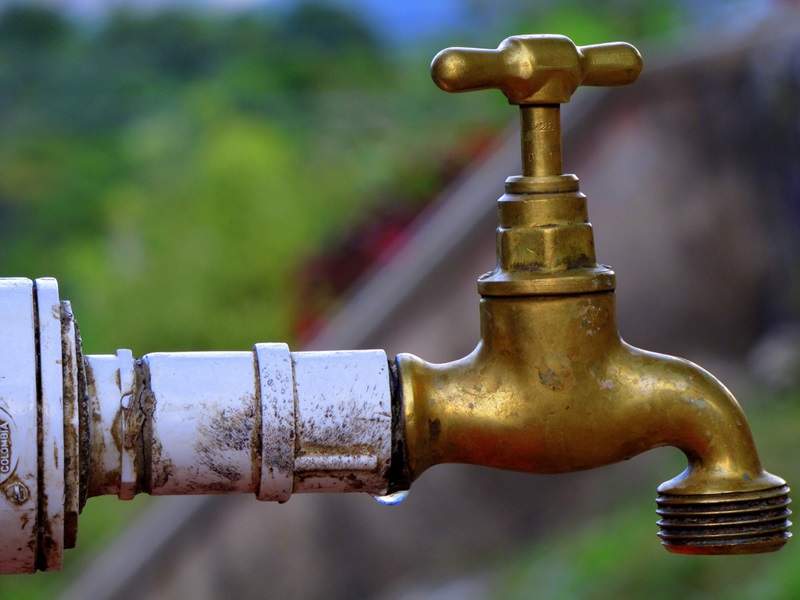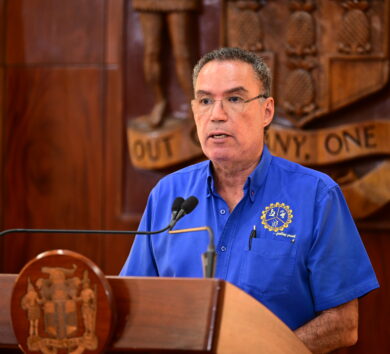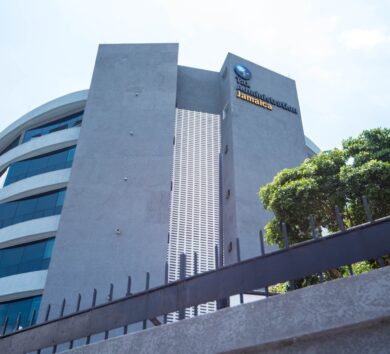

The National Water Commission (NWC) has successfully restored access to 65 per cent of its customer base and is aiming to move that figure up to 80 per cent before this weekend.
“We can report that we’ve had 631 systems disrupted, with 132 systems currently active, giving you the total of 763,” Minister of Water, Environment and Climate Change Matthew Samuda confirmed.
He was speaking during a special press briefing on Hurricane Melissa recovery at Jamaica House in Kingston, on Monday.
The minister pointed out that the systems that have been brought online are the Commission’s largest systems. “For instance, we can report that the Constant Spring system, which feeds from the Hermitage Dam, has, indeed, been restored and is operating from JPS (Jamaica Public Service) power. We can report the same for the Mona and Hope systems, which obviously move the numbers significantly,” Samuda stated.
He outlined that the Tulloch Spring water system, which supplies southern St Andrew, Portmore, and the majority of St Catherine, is operating at around 30 per cent of capacity.

“We expect that this system will be connected to JPS this evening, which will bring back over 80 per cent of customers in St Catherine,” the minister said.
Regarding St Thomas, he noted that the largest system—the Springfield system—is operating using a generator.
In Clarendon, one of the largest systems, the Kemps Hill system, is currently down, but is expected to be back online Monday evening, positively impacting communities such as Rocky Point.
“In Manchester, we are almost at total outage, except for the Porus and Broadleaf to Content system. This was brought up as a matter of urgency in partnership with NWC and JPS to ensure that the Mandeville Hospital is, indeed, being served by 24-hour water,” Samuda said.
He noted that the Gutters and Pepper systems in St Elizabeth, which also serve Manchester, are down and there is no generator large enough to facilitate those pumps. The NWC is in the process of procuring a generator for that system as a part of its resilience-building strategy.
“The two major systems in Northern Manchester, this being the geographic region, which have some impact in Trelawny and western Clarendon, are also both down, awaiting power,” the Minister shared.
Meanwhile, he noted that the Old Pepper Well, which serves from Goshen to Santa Cruz in St Elizabeth, is running on generator.
“It is running in eight-hour increments, and it is serving that entire corridor, so they’re getting between 16 and 20 hours of water between Goshen and Santa Cruz currently. In Luana, as we move further west, we would have installed a generator two days ago. They’re now getting eight-hour increments of water, getting between 18 and 20 hours of water in that area,” Samuda detailed.
He pointed out that at the Dalintober facility, which provides service to the Black River Hospital, a generator is currently being installed on site, and this will restore water supply to Black River.
The Logwood system in Hanover, which also serves parts of Westmoreland, has continued to operate throughout the hurricane and is still operating.
The Bluefields system in Westmoreland is also operational; however, the Roaring River system, which serves Savanna-la-Mar and Darliston, is out. The Noel Holmes Hospital served by this system is receiving trucked water.
As it relates to the rest of the north coast, Samuda pointed out that the NWC is seeing significant damage there, from Lucea in Hanover to Martha Brae in Trelawny, served primarily by two major systems—the Great River system, which is close to the boundary of Hanover and St James, and the Martha Brae system.

“In the case of the Great River system, the intake pipes were washed away during the storm, creating significant damage to the plant, and we are obviously hampered with returning supply because of this. However, we are happy to update that contractors have been on site now for some 36 hours. Their crew is working 24 hours a day. We are targeting temporary restoration by Friday midnight,” Samuda said.
As it relates to the Martha Brae, he said the system is active and able to provide between 15 and 20 million gallons of water a day; however, there is a break in the pipelines in the area of Lilliput, in St James, which has caused significant disruption in the supply from Lilliput to Terminal Reservoir and the eastern section of St James.
Minister Samuda said work has commenced on addressing that system and the Commission is targeting completion by Thursday morning to “restore water in the interim to all of St. James for at least eight hours a day”.
Meanwhile, he noted that work is underway to restore pumps in Trelawny, which is facing almost total outage at this time.
In St Ann, he said the NWC has procured the services of a generator that will power the Minard Well, which serves approximately 30,000 customers. The Bogue system in the parish has been operational since last Thursday, providing water to the plains of Runaway Bay, St Ann, to Port Maria in St Mary.
Over in St Mary, generators are en route to the Iterboreale well, while the Commission is working closely with JPS to bring the Agualta Vale system online, which would stabilise Central St Mary.
“As you move into the eastern end of the island, the disruptions of power are indeed significant, but we do have three generators which we expect to be deployed by close of business [Tuesday] in Portland, including in Port Antonio, which will stabilise the townships of Portland tomorrow,” Samuda shared.
He added that the NWC has more than 43 major generators running, and another 40 that are being deployed over the next 72 hours based on the assessments conducted and the state of particular pumping stations.







Comments